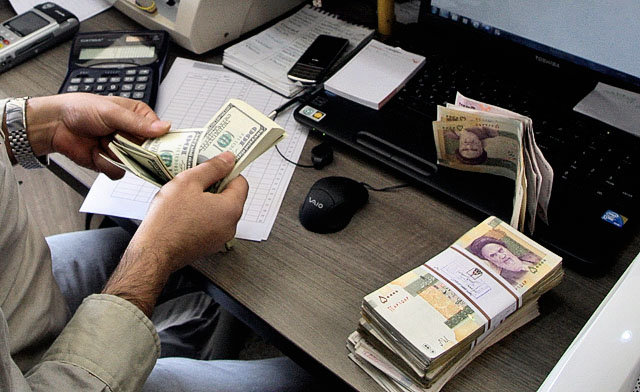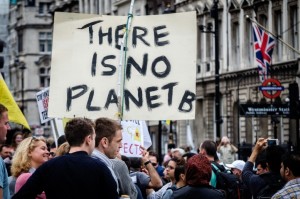by Djavad Salehi-Isfahani
Economic issues are paramount on the minds of Iranian voters as they ponder the long list of candidates registered for president: who among them is likely to survive the vetting by the Guardian Council, and, of those, who offers the best plan to get Iran’s economy out of the rut it has been in for the last several years?
Since the last election in 2009, the economy has stopped growing, more people are unemployed, prices have skyrocketed, and the currency has lost more than half of its value. Not all of these are the fault of outgoing President Ahmadinejad — sanctions have tightened considerably since he started his second term in 2009. But for the last several months the economic debate in Iran has been dominated by both his conservative and reformist critics who charge that his populist policies have brought economic ruin.
Three large programs define this populist legacy of redistribution. The first was a large $40 billion lending program for small enterprises, known as the “quick-returns projects”, which started in 2006 and was already widely considered a colossal failure before the 2009 election. The 2011 census revealed zero net jobs added to the economy since the program’s inception. Meanwhile, the public banks that were forced to lend to these projects have been left with huge unpaid loans. This large expansion of credit that failed to bring much additional output spurred the inflationary spiral that would later define the Ahmadinejad presidency.
The low-cost housing scheme, known as Maskan Mehr, also turned out to be highly inflationary because it relied on public lending to low-income people, forcing the banks to increase their borrowing from the Central Bank by about $40 billion and adding even more to liquidity.
The third, and most controversial, is the subsidy reform program, which redistributed some $70 billion worth of energy subsidies — most of which benefited people in middle- and upper-income groups — more equitably by replacing them with cash transfers. It also proved inflationary because the amount of cash distributed exceeded the cost of the energy subsidies that had been removed by an estimated $15 billion per year. The last two programs are still ongoing and have come under sharp attack, from both reformists and conservatives.
There seems to be a widespread perception among Iranian voters that Mr. Ahmadinejad has failed to deliver on his promise, first made in the 2005 elections, to “bring the oil money to the dinner table.” But this does not mean that the public is ready to give up on redistribution. If there is a program that promises them what they are looking for – redistribution without inflation – they will support it. But such a program is not currently to be found among the plans of any of the declared candidates.
Mr. Rafsanjani’s dramatic entrance into the election fray last Saturday is in part motivated by the hope that after eight years of redistributive policies, a majority of voters are now ready to view the type of pro-growth and pro-market policies that he spearheaded as president from 1989 to 1997 with more sympathy. He has certainly already won the support of the left-leaning reformers who, ironically, heavily criticized his structural-adjustment policies then.
Mr. Mashai’s equally dramatic registration on Saturday (with President Ahmadinejad at his side) is to convince voters that with more time populists will deliver on their promises. They should be assured of sizeable support from lower-income people, especially those who have benefited from his cash transfers.
The subsidy reform has been putting 450,000 rials per person per month in individual bank accounts since January 2011. While the value of this transfer has declined due to inflation – when it started it was worth about $45 but is now worth less than half as much — it amounted to about 50% of the per capita expenditures of the poorest 10% of the population in 2011. With unemployment at record levels, they would find themselves in extreme poverty if this transfer is substantially reduced or eliminated. As much as half of the country’s total population are net beneficiaries of the cash transfer program because the energy subsidies they replaced were highly regressive.
Mr. Rafsanjani’s put-down of cash transfers in 2008 as “fostering beggars” is unlikely to endear him to the poor and the jobless. Convincing them that they would do better with real economic growth makes economic sense but will be a hard sell politically to this group. He may not need them, however, because the middle- and upper-income classes for whom the cash transfer matters little — for the top decile, it makes up only 5% of their expenditures — account for some 40% of the electorate.
Candidates from conservative factions, known as “Principlists”, have so far gotten away with simply pointing out what they are against – inflation, unemployment, and bad implementation of good policies by the current administration. They have been careful to stress their commitment to continue the two remaining programs – subsidy reform and low-cost housing – but manage them better.
But the arrival of Mssrs. Rafsanjani and Mashai on the electoral scene will force them to define more precisely how they plan to bring about economic growth while continuing the most important policies of the Ahmadinejad administration. If the Guardian Council, which has the final say on who can run, allows this election to become a three-way race between populist, pro-growth, and Principlist philosophies, the conservative candidates will have to say more clearly what they are for, not just what they are against. Without it, they are likely to find themselves squeezed between the two better-defined alternatives.





